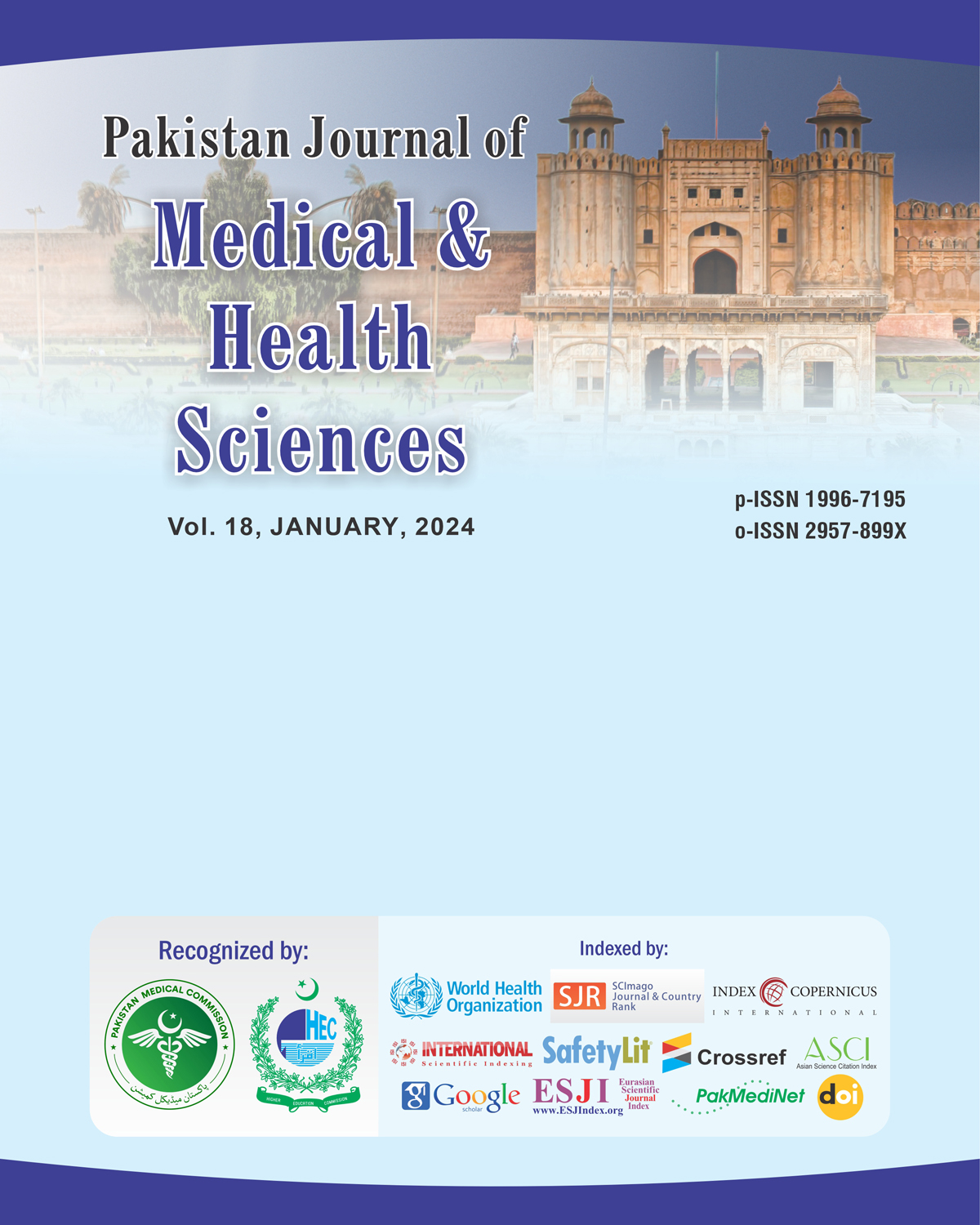Premature Ovarian Insufficiency: Challenges in Diagnosis and Management of Premature Ovarian Insufficiency
DOI:
https://doi.org/10.53350/pjmhs02024181142Abstract
Background: Premature Ovarian Insufficiency (POI) is a condition where normal ovarian function is lost before age 40 years which results in the formation of various clinical symptoms resulting in reduction of emotion, sexual and mental health of a patient. In a young woman, the diagnosis of failing ovarian function is complex and difficult, and if not promptly addressed, it will lead to long-term consequences.
Objective: To assess the incidence of various variables related with the diagnosis and management of premature ovarian insufficiency.
Study Design: Prospective cohort study
Place and Duration of Study: Department of Gynaecology & Obstetrics, Shaikh Zayed Hospital, Lahore from 1st April 2023 to 30th September 2023.
Methodology: One thousand females were enrolled. Various categorizations were considered while diagnosing the cases with premature ovarian insufficiency. These categories included family (genetic etiology) and clinical history (infectious, autoimmune etiology), symptoms (vasomotor symptoms, hot flushes, night sweats, vaginal dyspareunia and dryness, vulvovaginal atrophy, mood disturbances, loss of libido, memory problems, tiredness, insomnia, memory issues, and weight gain. Anthropometric measurements including weight, height, will be recorded. Those cases which were presenting with oligomenorrhea and clinical symptoms of POI were further placed in a separate group (Group A) than those having regular cycles and no clinical symptoms having infertility (Group B). Various tests were analyzed as the presentation may also be with sub-fertility due to the reduction in ovarian reserve, genetic disorders, autoimmune disorders, infectious, e.g. mumps/TB, deficiency of galactose-1-phosphate uridylotransferase (GALT) and iatrogenic, e.g. surgery, chemo/radiotherapy, amenorrhea (considering only skip of 3 periods) occurrence, two FSH tests which are 4 to 6 weeks apart, estrogen levels, antral follicle count (AFC), Thyroid peroxidase autoantibodies (TPA), thyroid function test (TFT) and Anti-Mullerian Hormone Test (AMH) levels. Hormone replacement therapy was regime for the females with premature ovarian insufficiency and patients were requested to keep a follow up twice a year for proper management of the premature ovarian insufficiency condition. while 5 cases had PO on diagnosis had only infertility and no clinical
Results: There were 10 females who were having oligomenorrhea (Group A) and symptoms of POI while 5 cases had PO on diagnosis had only infertility (Group B). Among the POI cases the early menarche was only reported in 3/15 females. The present study presented a significant correlation of hot flashes, mood swings, vaginal dryness, libido loss and insomnia with POI. Weight gain was observed in non-POI; group C females as well making an insignificant relation within the groups. The blood tests values presented that FSH, E2 AMH, AFC and GALT were significantly associated with disturbed levels in premature ovarian insufficiency. The levels were most significant disturbed in the oligomenorrheic females having POI.
Conclusion: A significant correlation of infertility, hot flashes, mood swings, vaginal dryness, libido loss and insomnia, and significantly disturbed levels of FSH, E2, AMH, AFC and GALT were found in POI.
Keywords: Ovaries, Syndrome, Oligomenorrhea
Downloads
How to Cite
Issue
Section
License
Copyright (c) 2024 Amna Kazi, Aliya Hafeez, Khairunisa Shaikh, Maria Dhahri, Yasmeen Khatoon, Neha Ahuja

This work is licensed under a Creative Commons Attribution 4.0 International License.


